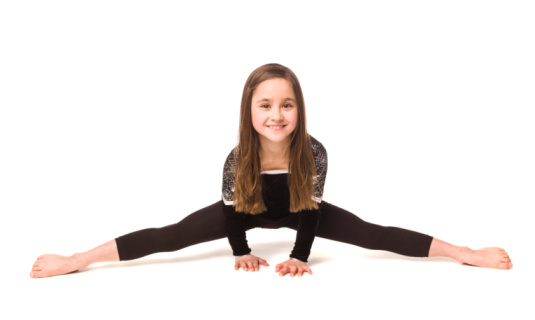
Ring the Bell, Pranayama is in Session
How will Yoga fitness change schools? The rise of attention deficit disorder (ADD), decreasing emphasis on physical fitness, and the increasing stress levels of our children, worry us all. With this in mind, some educational programs and public schools are giving Yogic methods a chance, by allowing their students to practice from an early age.
Parents who enjoy Yoga are happy to share it with their children. Even the federal government supports efforts: federal Physical Education Program (PEP) grant worth about $750,000 has helped train some 200 teachers nationwide in “Yoga Education.”
According to an article in Education News, in October 2010, Yoga classes for students range from year-long regular exposure, as part of a standard Physical Education class to elective classes, typically less intense and sometimes offered during the school day, or before or after, school. Providing the Yoga instruction costs, on average ,$70 per class, but the cost to the school varies depending on students’ ability to pay.
Nonprofit organizations, that recognize the value of Yogic practices, have jumped on the bandwagon to support it. Charitable group, Bent on Learning, raised $325,000 for children’s Yoga in schools in June 2011, through an elite fundraiser, with guests like Gwyneth Paltrow. Other organizations raise funds on a smaller scale or “match make” opportunities between local Yoga instructor volunteers and needy schools.
Best of all, there is definitive proof that Yogic practices in schools lead to positive outcomes for students. The Program Evaluation and Research Collaborative (PERC) is an independent entity, overseen by California State University, and provides program evaluation and research services to local, state, federal agencies, and schools.
In 2003, they evaluated the “Yoga Ed” program in The Accelerated School (a California charter school). The study subjects were 405 students from kindergarten to 8th grade, and 18 core subject teachers. The Accelerated School is located in South Central Los Angeles, with a student body composed of 62% Hispanic and 36% African-American students.
Highlights of the results of this study are mentioned below.
Participation appears to help students’ improve their attitudes toward themselves.
Participation helped improve students’ behavior.
Participation helped improve students’ physical health.
Participation helped students perform better in school academically.
Conclusion
The introduction of Yoga fitness in schools has not been without controversy. Some critics of Yogic methodology see its historic base, in Hindu spirituality, as a conflict with the ban on religious activity in public schools. To avoid this, the Yoga fitness classes have developed alternative terms for components that have traditional names or supposed spiritual aspects. Hence, breathing techniques are now called “balloon breath,” “bunny breathing” and “dragon breath,” for example.
Therefore, if you are a Yoga teacher, who has been invited to teach in a public school, be aware that extremist objections can possibly surface. In such a case, it may be impossible to reason with the unreasonable. One option for public schools is “Yogic Fitness” or “Stretch and Breathe Classes.” At the very least, our children will learn to be fit, focus on their studies, and deal with daily stress.
© Copyright – Aura Wellness Center – Publications Division
Please feel free to share our posts with your friends, colleagues, and favorite social media networks.
See our selection of online yoga teacher training courses.
Visit our testimonials to find out what our graduates have to say about our selection of online yoga and meditation certification courses.
Visit our online Yoga instructor training community.
See Yoga videos, demonstrations, and lectures related to Yoga instructor certification and continuing education courses for Yoga teachers.

There is definitive proof that Yogic practices in schools lead to positive outcomes for students. Thank you Dr. Paul Jerard for point out this important topics, I also think if yoga added in school it will bring positive outcomes.
[…] Special thanks to: http://www.yoga-teacher-training.org. […]